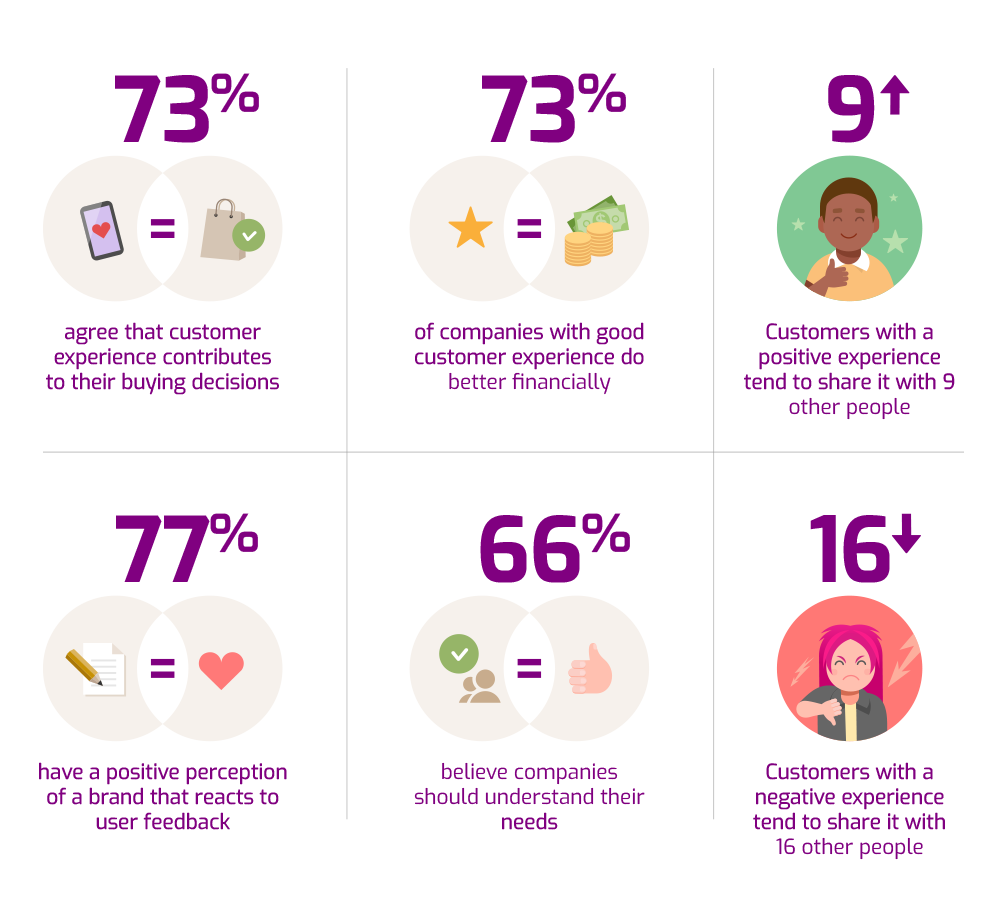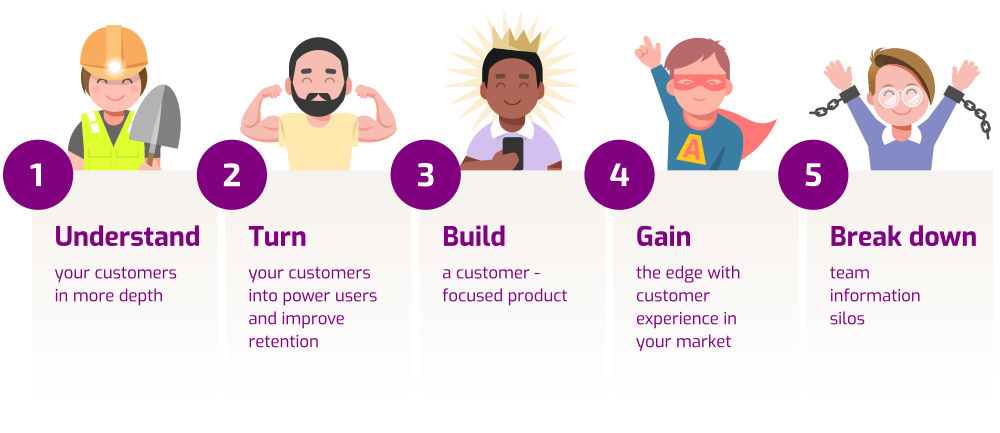Experience Management: what it is & how to use it

Table of Content:
Building a positive customer experience should be a priority— 84% of people reported that their experience with a company is equally important to the product itself. Of course, behind every happy customer is a dedicated team working to maintain a positive perception of their brand and product.
For this work to be successful, the team must be able to understand and take action on every interaction customers have with the product. They must be able to collect and take action on masses of customer feedback with speed and accuracy.
Read our guide on Semantic analysis: process and categorize thousands of reviews in seconds. ->
It’s about much more than just offering basic customer service. It’s about amplifying your customers’ voice, so that it can contribute to relevant decisions across the business — from marketing and product to support. To do this effectively, you need an experience management platform.
What is the meaning of experience management?
Experience management that's focused on customers involves the interactions between the company and the customer from first discovery till long after the point of sale. It’s a system that allows a company to monitor, analyze, and engage with its user base. By consolidating and organizing user feedback, actionable insights can be easily extracted and follow-up interactions set up. The ultimate purpose of experience management is helping businesses improve the customer experience through these insights.
Experience management software allows businesses to:
- Make customer-centric decisions based on actionable customer data
- Understand how user feedback is impacting key product and business metrics
- Quickly identify and tackle emerging issues as they arise
- Respond to customers quickly and with relevant information
- Prioritize feature requests from feedback for the product roadmap
- Uncover the customer experience of competitors in the market
Why is experience management important? (+5 stats)
In the digital world, markets like the app ecosystem are becoming more competitive, and harder for apps to find differentiation from one another. With higher consumer expectations and emerging needs, there’s never been a more important time to adopt an experience management platform.
Still not convinced? Let’s look at some stats:
- 73% of customers agree that customer experience contributes to their buying decisions
- 73% of companies that perform above-average with their customer experience do better financially than customers.
- 77% of customers have a positive perception of a brand when it looks for and takes action on user feedback
- When it comes to expectations, Salesforce found that 66% of customers believe companies should understand their needs.
- According to Deloitte, when someone has a good experience with a company they tell 9 people on average but tell 16 about a negative experience.

5 benefits of experience management
If your company provides good customer experiences, it may be able to cut through the noise. You want a reputation for listening to customers and providing stellar support. To keep your user base engaged and to prevent churn, your product must meet expectations and take action on emerging customer needs.
By implementing an experience management solution, you'll have the tools to achieve the above. Simply put, you’re setting yourself up for success. The benefits of adopting a solution like this are numerous, but here are the top five:
1. Understand your customers in more depth
The ability to segment users based on their needs and feedback through experience management allows you to really understand them and build a customer-centric business. As said in our guide on the voice of the customer: “the success or failure of a digital business depends on its ability to understand its customers — and building a product that reflects their needs.”
Download Voice of the Customer Guide ->
2 .Turn your customers into power users and improve retention
Customers like nothing better than being listened to and finding that action has clearly been taken based on their feedback. Not only will they want to spend more and have a higher customer lifetime value, but they are also more likely to go out of their way to suggest your product and brand to their peers. It can turn ordinary customers into power users — your strongest advocates and a powerful marketing tool. An experience management solution allows you to communicate with users manually or via automation and to collect and share user feedback across the business. This helps you develop an effective response strategy and cultivate a loyal user base.
3. Build a customer-focused product
An experience management solution will enable your team to quickly find customer insights and add them to the product roadmap. Experience management helps you prioritize issue reports and feature requests based on topic weight and sentiment. It makes this so easy to process customer data, weeding out anything of low value to find valuable feature requests and issues. The result is a product roadmap that accurately reflects customer needs and a better product in the long run.
4. Gain the edge with customer experience in your market
Customer experience is the number one priority over pricing and product for business executives — they know it's the key to growth. With more companies adopting a CX-first approach, you need to understand how well your competitors are doing with customer experience to know how to get an edge. An advanced experience management solution gives you the power to see what competitors’ users are saying — what features are missing, the incoming bug reports, and user sentiment. By knowing this, you can fill in these gaps with your product, ultimately getting ahead in the market.
5. Break down team information silos
Using an experience management solution means that the bad practice of each team using different systems for customer-related activities can be avoided. This means there won’t be customer information silos, which prevents the hugely important cross-team collaboration and information sharing. Experience management includes tools relevant to departments across the business but allows for customer data to be categorized in ways that are easy for every team member to discover and navigate. It can be used as the single central point for the company to understand the state of the customer experience, analyze feedback, and respond to users.

How to do experience management right
To ensure you're doing experience management right, you need to know what you want to achieve and that the relevant stakeholders have bought into its benefits. Without this strategic outlook or top-level alignment, you risk unrealistic expectations or implementing the wrong type of solution in the first place.
Your organization should also be analyzing both qualitative and quantitative customer data. Without including qualitative data, for example, you miss out on understanding user sentiment or finding out the ‘why’ behind your quantitative data.
Lastly, after implementing your chosen solution, you need to put together and educate the relevant parts of the business on how it works and what exactly you aim to achieve by focusing on customer experience: choosing objectives, KPIs, and laying out a clear strategy.
Experience management with AppFollow
AppFollow is an experience management solution for mobile apps powered by automation. It will help you understand how your users really feel and perceive your app, allowing you not to build something customers love and strengthen your brand by providing memorable customer experiences. AppFollow’s technology helps you put your customers’ needs at the centre of decision-making.
Want to learn more about how AppFollow can help you? Let’s talk.



